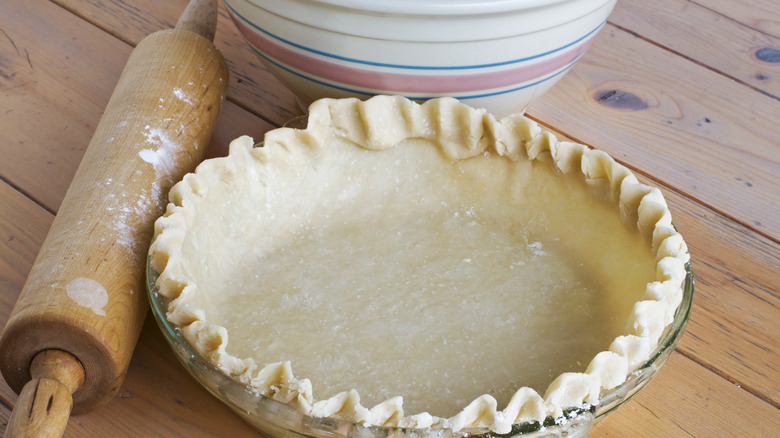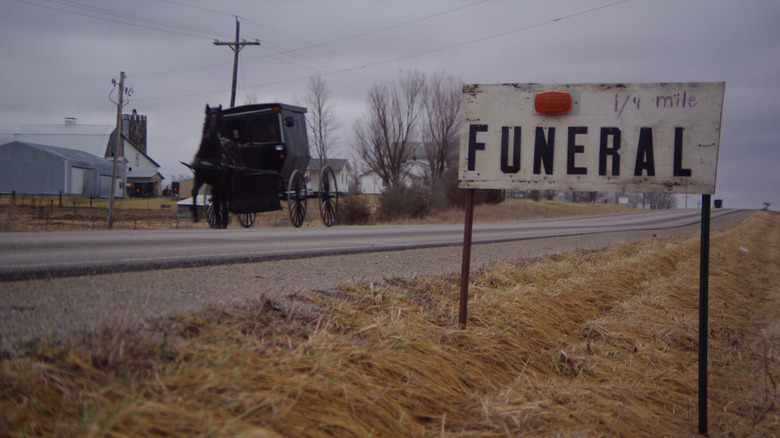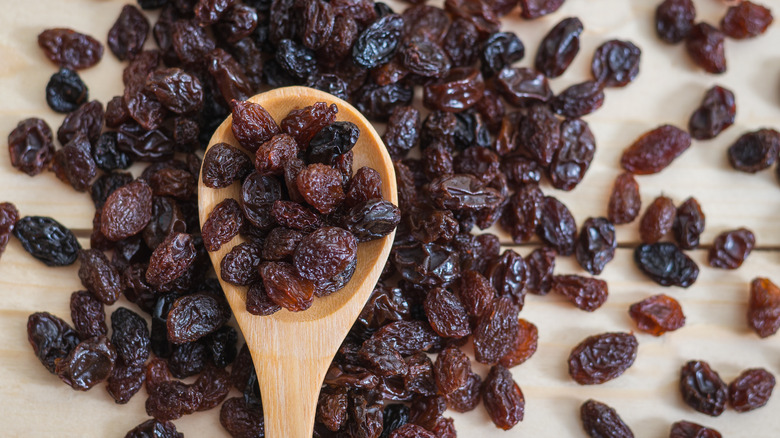Raisin Pie: Pennsylvania's Most Delicious Omen Of Death
Some people are weird about raisins. Maybe it's their shriveled texture or their association with the oft-maligned prune, but finding them in an unexpected dish can be enough to send certain diners into a frenzy of betrayal. Still, many others like them, especially in cookies, or plumped in wine and simmered with root vegetables or pots of fluffy rice.
In addition to their more obvious applications in breakfast dishes such as granola bars, oatmeal, and cold cereal, you might find raisins strewn over a glazed pork chop or jeweled within a loaf of challah or raisin bread (the latter of which may or may not have been invented by Henry David Thoreau, per Lapham's Quarterly).
In 19th-century Pennsylvania, at Mennonite churches run by German immigrants known as the Pennsylvania Dutch, the dried fruit served as the star of a sumptuous dessert eaten at post-funeral feasts. As a result, the not-so-humble raisin pie became known as the latch on death's door.
Funeral pie
At a typical funeral, the guest list is composed of the departed's friends and family. Oftentimes, those guests will gather after the service to share food and reflect on the memory of their late loved one. The latter practice was definitely observed at Mennonite funerals in 1800s Pennsylvania, but some of the guests might not have even known the person for whom the burial — and subsequent feast — had been held. According to Atlas Obscura, it was common to turn a blind eye to "funeral runners," who were solely there to indulge in foods that were far more extravagant than the community's typical fare.
"Because the Pennsylvania Dutch spent so much money and time on their big funeral dinners, there were fake mourners who showed up just to get free food," culinary historian William Woys Weaver said to Atlas Obscura. "Instead of the usual cabbage and dumplings, there was beef, ham, or chicken." Likewise, raisin pie (or funeral pie) showed up as a special treat reserved specifically to honor the dead.
"When an ailing member of the community took a turn for the worse, it was not uncommon to hear someone solemnly declare, 'There will be raisin pie soon,'" Atlas Obscura reports.
Raisins were once a luxury
The Amish certainly aren't known for embracing technology, but even if that weren't true, many of the food-production innovations that exist today weren't around in the 1800s. One example is deseeding machines, which save humans from having to manually peel the skin from grapes to dry them into raisins. According to the European Patents Office, an "apparatus for the continuous separation of the flesh of fruit from the pits and skins" didn't come into popular use until the late 1970s.
What's Cooking America adds that raisin pie could be made in advance and didn't require refrigeration, allowing funeral organizers to focus on other things.
Because deseeding required so much labor, an ingredient that's common and inexpensive today was a luxury among the Pennsylvania Dutch in the 1800s. Speaking to Atlas Obscura, historical reenactor Nancy Schmeichel called the process of making a funeral pie "an absolute labor of love." Evidently, the dessert was also a labor of death.


